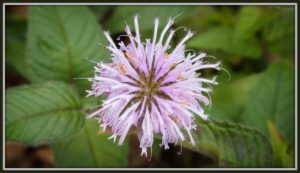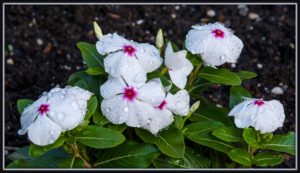Good News, Bad News
Double-click on any image to view it full size. Click the back-button to return to your place on this page.
Greetings!
The bad news is that less than 24 hours after we got back from our recent trip around North Carolina, my primary camera died. I was out taking pictures, and when I pressed the shutter release, it gave almost literally a scream of agony and went into a coma. My verdict, endorsed by the pros at the camera store, was that the shutter release drive train was at fault. The noise certainly sounded like tiny gears tearing themselves apart, and I know that I had put in excess of 150,000 operations on the mechanism. The good news is that it waited until after the trip to expire, and that the estimated repair cost made it seem like a sign that I was supposed to get a new camera!
So I now have a Nikon D810, which a step (or two) up from the D600. The primary difference is that the sensor has a 36 megapixel sensor (compared to 24 for the D600). It also has a substantially increased ISO range, a faster maximum shutter speed, and much better autofocus. It looks and feels almost exactly like the old camera, and is compatible with all my lenses and accessories. Since so much of my photography centers on small creatures in the wild, the higher resolution sensor helps me to crop an image without losing image quality, while the higher ISO capability lets me get better results in low ambient light conditions without the complication of flash.
Anyway, this week I offer a few images from the first two weeks of using this new camera. The first picture was taken at 1/640 second shutter speed to eliminate motion blur because the wind was moving the flowers around quite a lot, at f/13 for depth of field, and consequently at ISO 1600! The attached version is a 1 MB copy, resized from a 22 MB JPEG file, which itself was converted from the original NEF file, so it has lost a lot of fine detail.
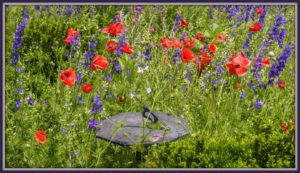
Image #2 is an uncompressed part of the original JPEG, centered near the tip of the sundial gnomon (pointer), to show the true detail that remains even after conversion to a JPEG.
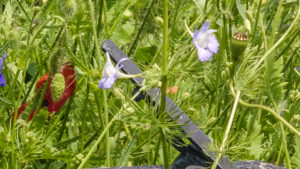
Continuing the poppy idea, picture #3 is a close-up of a single flower, although not the same exact kind as is featured in the previous image.
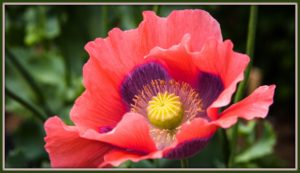
And the flower theme continues with the bee-balm in #4, what I think is a rudbeckia (aka black-eyed susan or coneflower) in #5, and the newly-watered blossoms in #6.
#7 continues the garden train of ideas, showing a (tinted) gazing ball that captures a panoramic view.
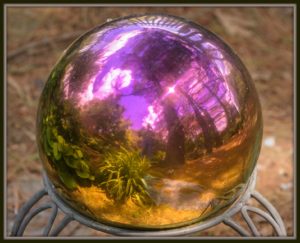
It’s been a long time since I have used a dragonfly picture. #8, of a male Blue Dasher (Pachydiplax longipennis), was taken yesterday (Sunday) morning.
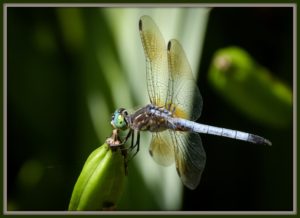
I carefully moved my viewpoint so that the detail in its wings would show up clearly against the pale leaf in the background. The subject was so close to the camera that even using an aperture of f/8, the background is nicely blurred so as not to detract from the main subject. I now seemed to have moved to an insect theme, because #9 shows a male Wool Carder bee on a leaf of a lamb’s ears (Stachys) (aka bunny’s ears) plant.

The female Wool Carder bee will scrape the soft hairs off leaves such as this, and them use them to line her nest. The last picture in the set, #10, is another insect – a Little Wood Satyr (Megisto cymela) butterfly. It is only just over an inch in wingspan. As the name suggests, it is commonly found in wooded areas, and hence usually in relative low light conditions. This image has been cropped very significantly from the original (you are seeing less than one tenth of the whole image), but in spite of that, and the ISO of 5000 (sic), the image retains relatively good detail and low noise – thanks to the new camera!
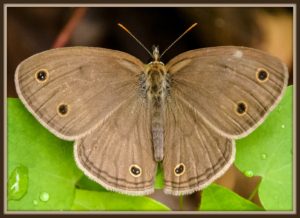
Remember that the best camera is the one you have with you, and have a great week!
